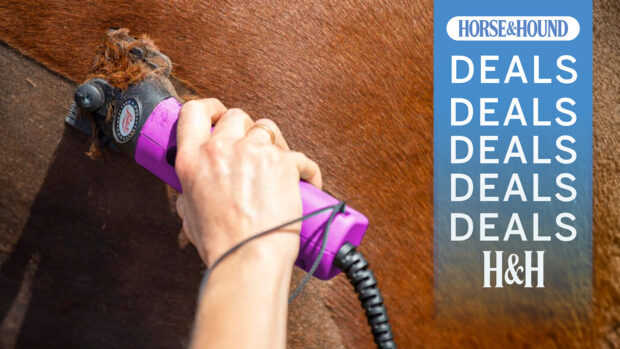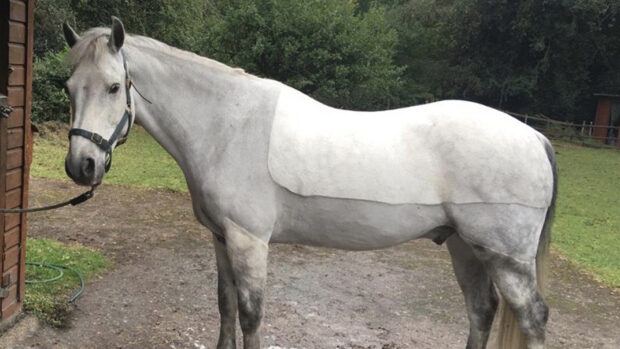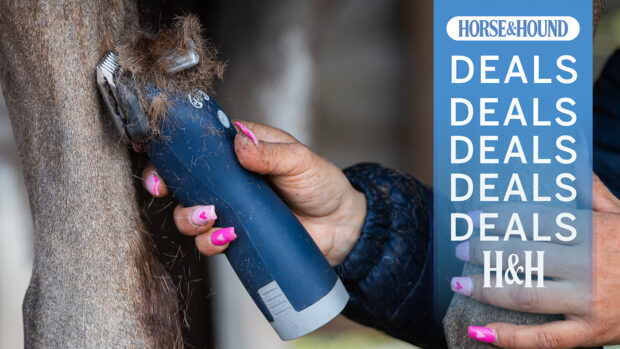Watch the second of H&H’s new clipping masterclass video series.
The video has expert advice from Mary King and her groom Jodie Summers as they clip Mary’s home-bred advanced event horse Kings Temptress. Topics covered include introducing the horse to clippers for the first time, clipping nervous horses, clipping difficult areas such as the
Also available is epsiode one: clipping basics and coming next week is episode three: expert clipping tips.
Clipping challenges
1. When clipping a nervous horse:
- Think about what clippers to use
- Cordless clippers are a good choice as there is no wire to scare the horse and the handler is free to move around as necessary
- Consider starting with some quieter, lightweight trimmers, but these will not be able to do a full clip
2. When clipping a horse that has never been clipped before:
- Spend some time getting the horse used to the clippers first
- Clip an older horse that is good to clip with the young horse nearby
- Run the clippers while grooming the young horse
- Introduce the clippers carefully. Let the horse see them while they are turned off
- Take the clippers away and turn them on. Watch the horse’s reaction
- If the horse is relaxed, bring the clippers to the horse and place them on the shoulder
- Once the horse has accepted the sound and vibration you can start clipping but be aware of the horse’s body language and only do as much as the horse is comfortable with
3. Some horses simply do not enjoy being clipped. If you have tried desensitizing your horse and he is still difficult, you have a few options:
- Rug the horse up early to try to prevent a thick coat from growing, so you do not need to clip
- If there is a particular area that the horse doesn’t like having clipped, such as the head, choose a clip that avoids that area
- Some horses will settle if a second person stands with them and keeps their attention with some feed
- If the horse is ticklish around the belly for example, having a second person hold up a front leg may be sufficient to get the area clipped
- Finally if the horse has to be clipped and is a danger to itself and you during the process, speak to your vet about having the horse sedated
4. Expert tips from Mary King on how to clip the horse’s head:
- Always make sure the blades are cool before clipping the head
- Mary prefers to use large clippers for most areas of the head, and trimmers for the ears and nose
- Go gently and be very careful around the bony areas of the face
- Place your hand over the eye when clipping close to it to protect it and help the horse to settle
- If the horse is quiet it is easier to clip the head if the headcollar is round the neck, rather than on the head
- Be careful when clipping around the forelock. You don’t want to slip and chop a section of the forelock off by mistake!
- Move the loose skin on the face around with your free hand so you can get the clippers into all the nooks and cranies
5. When clipping around the elbows where there is a lot of loose skin, get a helper to lift the leg and pull it forward to straighten out the wrinkles. By stretching the skin tight you will be less likely to cut the horse with the clippers by mistake.
6. When clipping around the hind quarters and back legs be very cautious as it is easy to get kicked. Keep an eye on the horse’s reactions and if he appears unsettled ask your helper to hold up a front leg to help him stand still. But bear in mind that most horses can stand briefly on two legs, especially if one of the legs is being supported by a human being! Do not put yourself at risk.
7. When the clip is complete wipe the horse down with a warm, damp sponge to remove any loose hair, then rug up appropriately.
8. Caring for your clippers:
- Brush off all the loose hairs
- Remove the tension set and the blades
- Clean the blades with a brush and/or rag and put them away. Do not put them back on the handset while in storage
- Clean the handset and pack away carefully
- Store your clippers in a cool, dry place
- Send your clippers and blades away at the end of the clipping season to be serviced and sharpened ready for the following year




